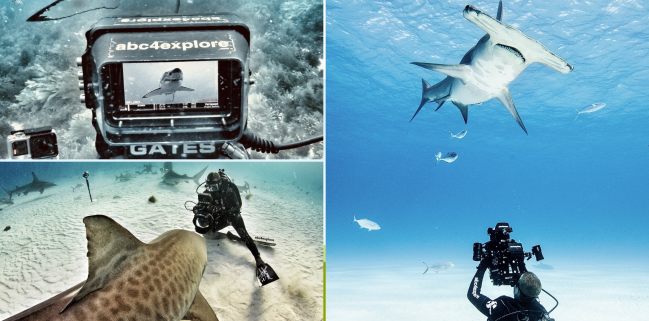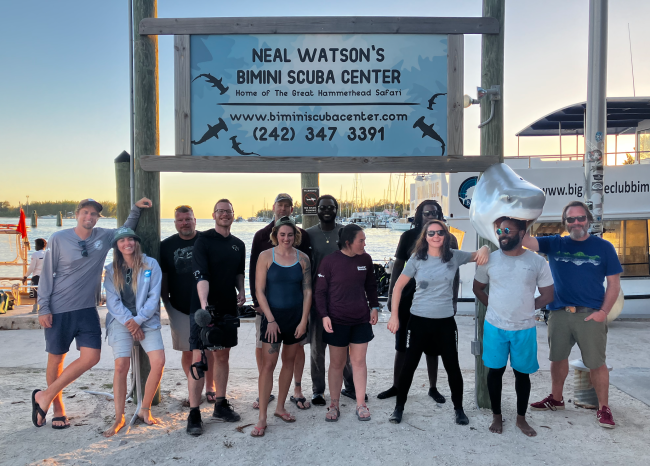By providing your information, you agree to our Terms of Use and our Privacy Policy. We use vendors that may also process your information to help provide our services. This site is protected by reCAPTCHA Enterprise and the Google Privacy Policy and Terms of Service apply.
How They Shoot ‘Shark Week’


A very happy “Shark Week” to all who celebrate! It’s wild that this marquee Discovery summer event seems to increase in size every year, spawning a massive 21 separate programs for its 2024 slate — which is, naturally, hosted by John Cena. This got the IndieWire Craft team thinking about how documentarians capture footage of nature’s most infamous cartilaginous fish, so we reached out to some “Shark Week” cinematographers with the same questions we ask both documentary and scripted DPs about how they craft the look of their projects.
You likely won’t be surprised to learn that the logistical constraints of getting up close to sharks are numerous and inform what these DPs arm themselves with, camera-wise. Andy Casagrande, who shot this year’s “Air Jaws,” stressed the unpredictable nature of the animal subjects as being core to a lot of decision-making. Particularly with respect to Great Whites, Casagrande told IndieWire that breaching — a hunting tactic wherein a Great White will launch all 1,500 to 2,400 pounds of itself out of the water to leap onto prey that it’s chasing — can happen as fast and as unpredictably as a lightning strike.
To catch the spectacular nature of those moments requires super high-speed slow-motion cameras. The ability to cache pre-record, a feature that allows a camera to continuously capture a short amount of footage even before an operator presses the record button, is also crucial to not missing the most dramatic moment. Casagrande shot “Air Jaws” on the Phantom Flex4K, using Phantom Cine 4K at 1000 frames per second, in order to capture a full sense of the power of Great Whites at a speed where the human eye can actually appreciate them.

Mark Rackley, who shot “Makozilla” for “Shark Week” ‘24, praised the RED Epic-W, which has been his workhorse for capturing sharks as they race through the water. “I also occasionally use the Sony FX3 but the RED is my ‘go-to’ camera,” Rackley told IndieWire. But perhaps even more useful than the cinematic underwater treatment of wildlife that Rackley gets from the RED is its housing.
“I use a Nauticam housing with a wide Zen glass dome and instead of using the electronic viewfinders, I custom-made a magnified viewfinder to my underwater housing. This allows me to put my head against the viewfinder, which in turn allows me to use my body as a tripod in the water, creating a more stable image,” Rackley said.

Andy Knight Mitchell, who shot “Mothersharker: Hammer Time,” also stressed that his choices were to get the best up-close image — in his case, images of Hammerhead sharks. He went with the RED Gemini, with a set of Duclos 11-16mm and Canon 16-35mm lenses. With these, he captured the violence of quick animal movement while maintaining an image that’s as sharp as a row of shark teeth. Rackley also went with a Canon 16-35mm lens for “Makozilla” because “It is wide enough for my underwater scenes and gives me a really natural looking image without warping the subject,” Rackley said.
Whatever equipment a cinematographer uses, clarity is always key with underwater imagery. A little bit of multi-purpose safety doesn’t hurt, too. Rackley told IndieWire that his Nauticam housing is big enough to work a little bit like a shield against large sharks and other wildlife. “The combination of this equipment gives me that certain look I am going for, for shooting ‘Shark Week,’” Rackley said.
By providing your information, you agree to our Terms of Use and our Privacy Policy. We use vendors that may also process your information to help provide our services. This site is protected by reCAPTCHA Enterprise and the Google Privacy Policy and Terms of Service apply.

















